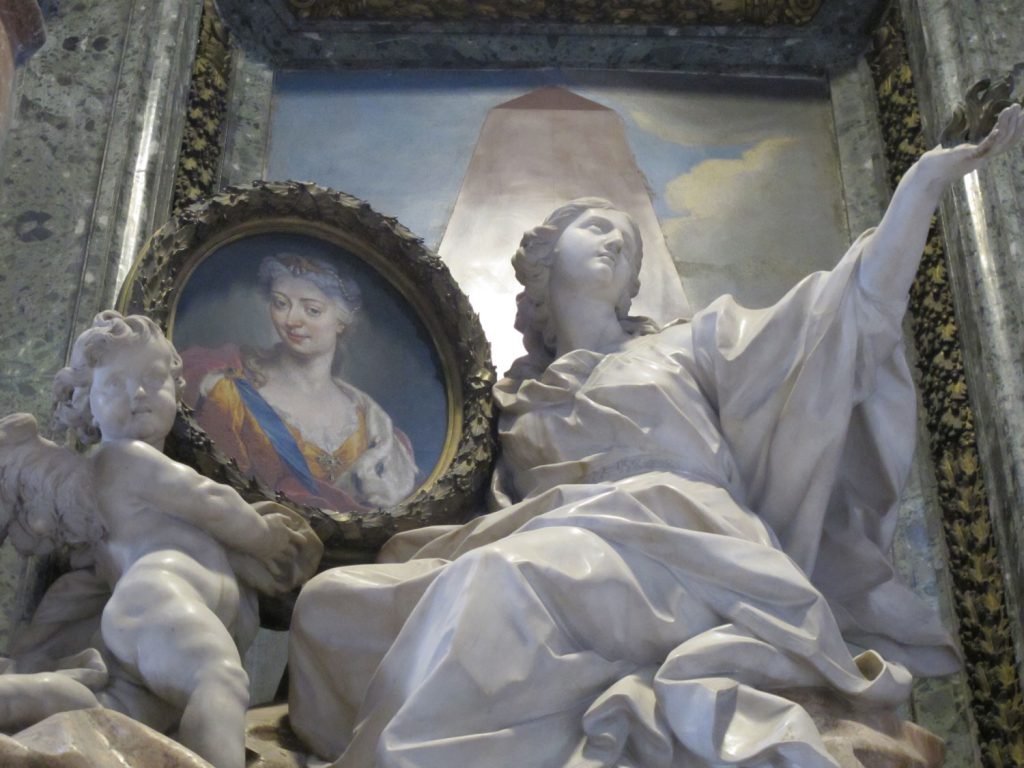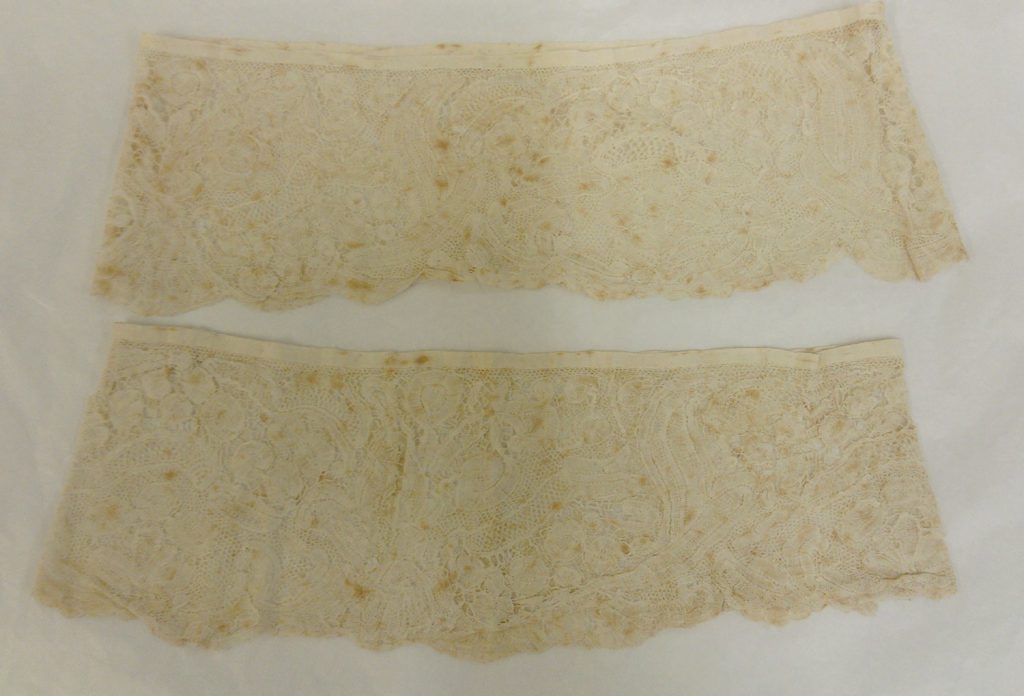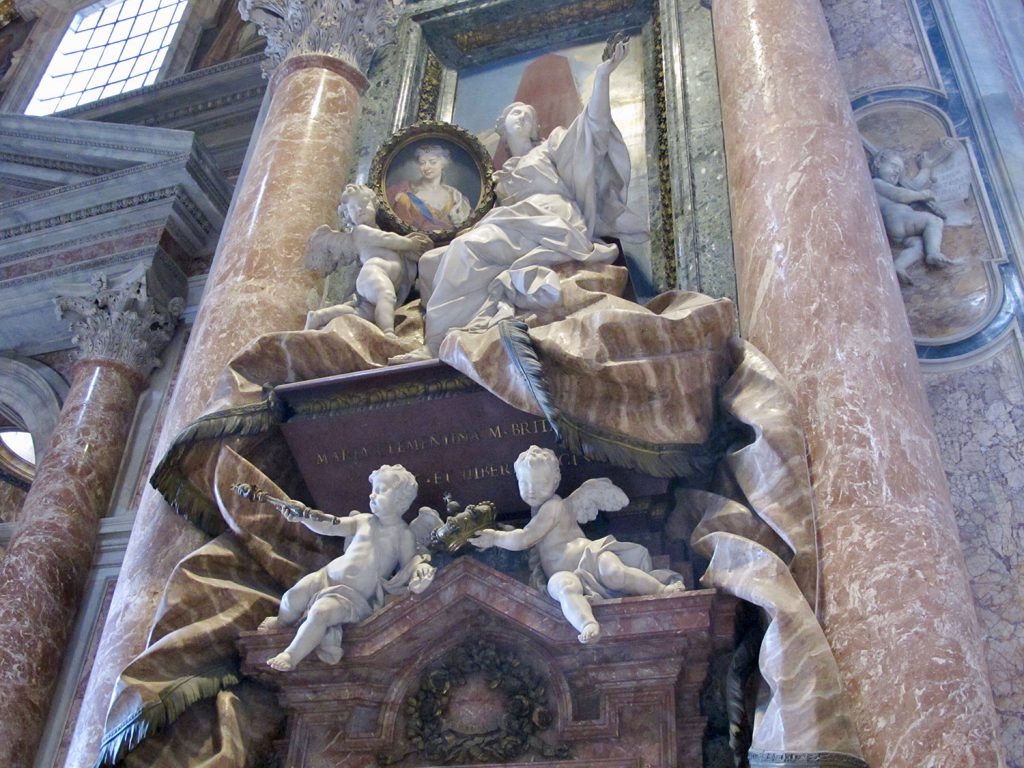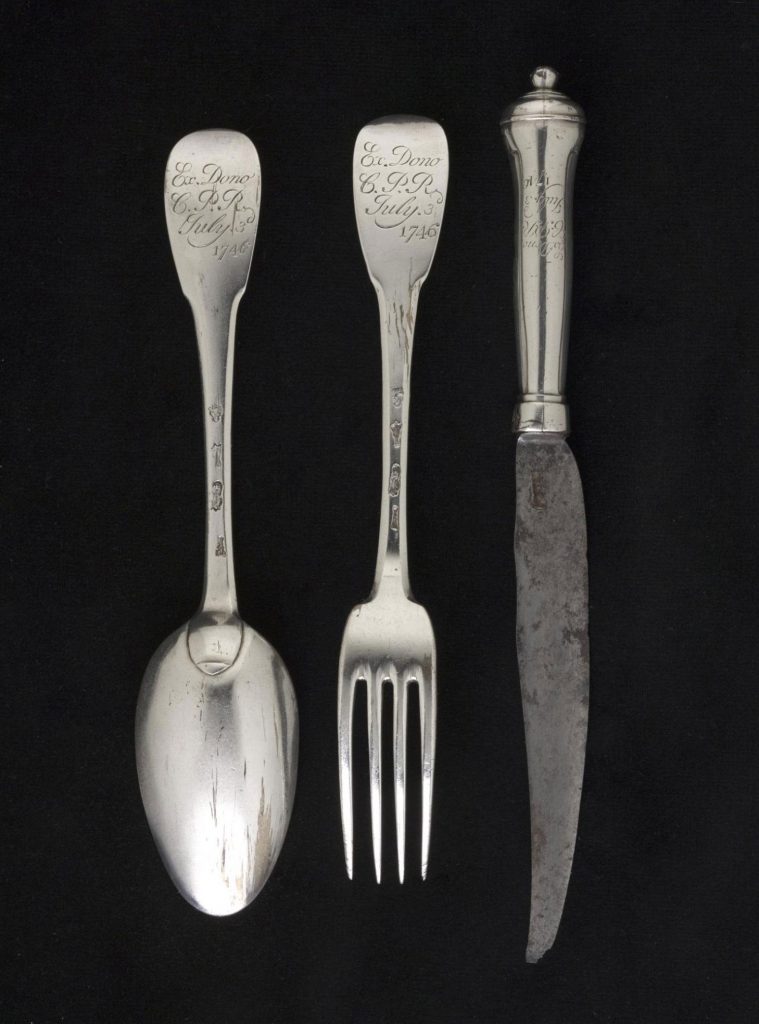In the collection of the National Museums Scotland is a set of clothing which is said to have belonged to the Stuart queen in exile, Maria Clementina Sobieska.
Clementina Sobieska (1702-1735) was a Polish princess who married the Jacobite king James VIII/III in 1719. Despite being the Jacobite queen, so far Clementina’s contribution to ‘the cause’ has been largely ignored. Through a closer look at the material culture which surrounds Clementina’s life and death, I hope I can re-instate her place in Jacobite history.

The objects in question are a set of lace sleeve cuffs, a lace flounce and a satin bed jacket. They were, the story goes, worn by Clementina in the later part of her life, possibly even while the last rites were being administered to her.
As a PhD researcher with National Museums Scotland, I have the privilege of doing some in-depth research into these object. I love that my project lets me spend time getting to know parts of the collection.
In order to understand the clothes and where they fit into my wider research into the exiled Stuarts and their supporters, I have gathered together various sources of information. This research started with seeing the objects up close. They are beautiful, if unassuming items. At this time, I talked to the curators who, with their specialist knowledge, could tell me more about the materials and style of the clothing. I also looked to the museum’s “objects files”, the record that National Museums Scotland keeps when new items are added to the collection. They usually include any correspondence relating to the donation or purchase of the objects, and any known information about them. To this museum-based research, I added my own findings in the Stuart Papers: these are the accounts, letters, bills, receipts and memos from the exiled Stuart court, a collection of which are now in the Royal Archives at Windsor.
So what can I say about these objects? The bed-coat is made of red and cream satin, with a cotton padded lining. It has three-quarter length sleeves, a sac-back, is fairly short, and would have been worn indoors. This style allows us to date the coat to the 1730s, when they were fashionable amongst elite women of Europe. This is the period when Clementina very much lived a private life, indoors, focussing on her religious devotion. This is also the time when Clementina’s health started to deteriorate (probably due to religious fasting). The jacket would have been comfortable, soft and warm, suitable for an invalid. Yet, made of satin in a fashionable style, it was befitting of a queen.

The lace, because of its style and make, can be also dated to the early 18th century. It is good quality white bobbin lace, probably from Belgium, where the best lace at the time was made. From portraits and Clementina’s household accounts, we know that Clementina did wear lace cuffs like these, and purchased new lace from Belgium throughout her life. Combining an understanding of the materiality of the objects with evidence in the archives, we give more concrete support to the story that these items were once owned by the Jacobite queen.

The history of these objects really starts after Clementina’s death. She died in Rome, in January 1735. She was granted a lavish royal funeral, funded by Pope Clement XII, and buried in St Peter’s Basilica. There you can see the huge monument which was built to her, completed in 1743.

After Clementina’s death, these pieces of clothing were sent to a convent for English Catholic women in Louvain, in modern-day Belgium. The community there was made up of English women, largely from elite families, many of whom had Jacobite sympathies. I haven’t been able to uncover what happened to the objects while they were with the nuns. However, we can assume that they would have been treasured as relics of the Stuart queen. Through these objects, Jacobite nuns would have felt a powerful connection to their deceased queen and exiled monarchs. Some even believed that such objects had the power to heal illness, through Clementina’s divine intervention as not only a queen, but a holy person in heaven.
Many and varying examples of Stuart relics exist, a large proportion of which have some kind of connection to Charles Edward Stuart and the ’45 rebellion (including these objects here). The transformation of everyday objects like these, which had been worn or used by Clementina, into Jacobite relics, shows that she, as much as her husband and son, was a focus of Jacobite loyalty.

These items of clothing stayed with the nuns and were brought to England in 1794 when the convent fled the upheaval of the French Revolution and was allowed to return to Britain (which had become more tolerant of Catholicism since the 16th century, when Catholic communities were first forced into exile). Again, it isn’t clear what happened to these objects until they were put up for sale in 1991 and purchased by National Museums Scotland.
This purchase adds another layer to the history of the clothing. The curator who collected them was arguably more interested in the set for its design than any Jacobite connection: the jacket is one of the best surviving examples of its style from the time, and therefore made a valuable contribution to the museum’s Art and Design collection in its own right. Another researcher might be more interested in using the coat for this reason! However, because of their history, this group of objects will always be for us relics, a point of contact with the story of the exiled Stuarts, their supporters, and Maria Clementina Sobieska, the queen that they revered.
Georgia’s project, funded by the Arts and Humanities Research Council (AHRC), is joint between the University of Edinburgh and National Museums Scotland (Department of Scottish History and Archeology) via the Scottish Cultural Heritage Consortium.
‘Loyal Exchange: the visual and material culture of Jacobite exile, c.1716-1766’ uses the Museum’s collection, alongside letters from the exiled Stuart court, to explore what the objects tell us about the relationship between the Stuarts and their supporters.
